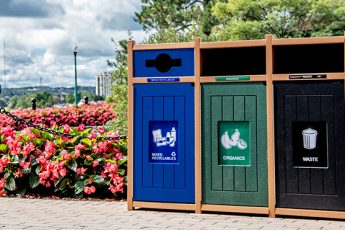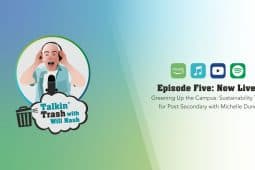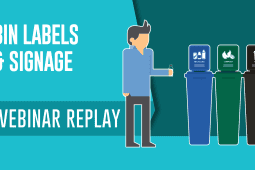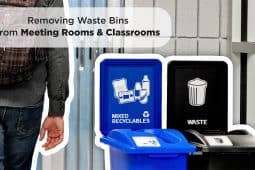In a perfect world, we’d set out recycling bins and collect all recyclable items, but the reality is, unfortunately, more complex. Recyclable items still end up in the trash, and non-recyclable items continue to contaminate recycling bins. It takes sustained efforts over time to build a successful program, and as they say, you can’t improve what you don’t measure! Without a close understanding of what and how well you’re recycling, recycling efforts often fall short. That’s why it’s important for your organization to actively collect data and analyze your program’s metrics. Program metrics bring to light the areas your program is thriving in, and where it needs a little improvement. Here are 4 important metrics every recycling expert needs to know!
1. DIVERSION RATE
Diversion rate is one of the most commonly known/used metrics and is represented as a percentage of total waste materials generated that are diverted from landfills or incineration. The diversion rate encompasses all diverted material, including anything that is recycled, composted, reduced, or otherwise diverted. The diversion rate is calculated as follows:
Diversion Rate = Weight of Recycling ÷ (Weight of Recycling + Weight of Garbage) x 100
Diversion rate is a key performance indicator for any recycling program and allows you to benchmark against comparable facilities as a way to gauge effectiveness. A high diversion rate attributes to a successful recycling program, as the goal of recycling is to reduce the amount of waste going to landfill and support a circular economy whenever possible.
Calculating your diversion rate requires a good tracking system to measure recovery and landfill-bound streams, which you can do for free through our Resource Center.
2. CAPTURE RATE
Capture rate removes non-recoverable trash from the equation to calculate the percentage of recoverable items in the waste stream that actually get recycled, composted, or reused. The capture rate is calculated by dividing the weight of all potentially recoverable materials, by the total amount of these materials that are generated. According to the Recycling Council of Ontario, Capture Rate is calculated as follows:
Capture Rate = Weight of Recovered Recyclables ÷ Weight of Total Household Recyclables
Your capture rate is determined through a waste audit and tells you specifically what you’re missing, the percentage of recoverable materials you could be but aren’t diverting from landfill. Once you are aware of your capture rate and the potential your program has for success, you can choose to increase education and aspects of your program to improve your average diversion rate, and get closer to zero waste!
3. CONTAMINATION RATE
Contamination is becoming an increasingly important issue in the recycling industry. Too much contamination can cause materials collected for recycling to instead be disposed of in the trash, which creates more problems for our environment. The contamination rate only looks at what is placed in recycling and organics bins. It is calculated by dividing the weight of the trash or otherwise non-recyclable or recoverable items that are accidentally placed in recycling or organics bins, by the total amount of all materials placed into the same recycling and organics bins.
Contamination Rate = Weight of Non-Recyclable/Non-Recoverable Items ÷ Weight of Total Recycled Materials
Calculating your contamination rate is done through a waste audit. Your contamination rate shows you what materials are commonly being discarded in the wrong stream. With this information, you can improve different parts of your program such as customized signage that emphasizes contaminated items, color-coding to differentiate streams, and standardization of containers throughout your program so participants have a better understanding. All of these improvements will better educate the participants on where those commonly contaminated materials go. These techniques should decrease your contamination rate, which will improve your recycling program overall.
4. GENERATION RATE/ YEAR TO YEAR WASTE GENERATION
Generation Rate is the total measurement of all waste generated on-site. The importance of the generation rate is to know how much total waste you are producing over time. Refine recycling, compost efforts, and more advanced zero waste programs look at how to reduce the amount of waste generated whether recovered or not, which is why it is essential to track your generation! However, generation rate is not a perfect measurement by itself because the population of your organization or the number of stations within your organization can change. For that reason, it can be helpful to use a common denominator such as pounds per person or square feet to compare. You can measure your waste generation rate by looking back at your records from your waste service provider (hauler); which should provide you with the weight of your garbage, recycling, and organics streams on a bi-weekly or monthly basis. If they don’t provide you with this information, you should contact them and ask for it!
Consistently tracking your program performance with these metrics is your first step in improving your recycling program. Understanding where you can do better allows you to implement new methods of education and program standardization to improve future metrics and rates. You can refine these metrics to a specific building or specific location for more detailed results. And to top it off? These improvements could save you money in disposal costs, motivate your participants to get more involved, and your improved rates will give you great bragging rights that you can share with staff and even the public!







